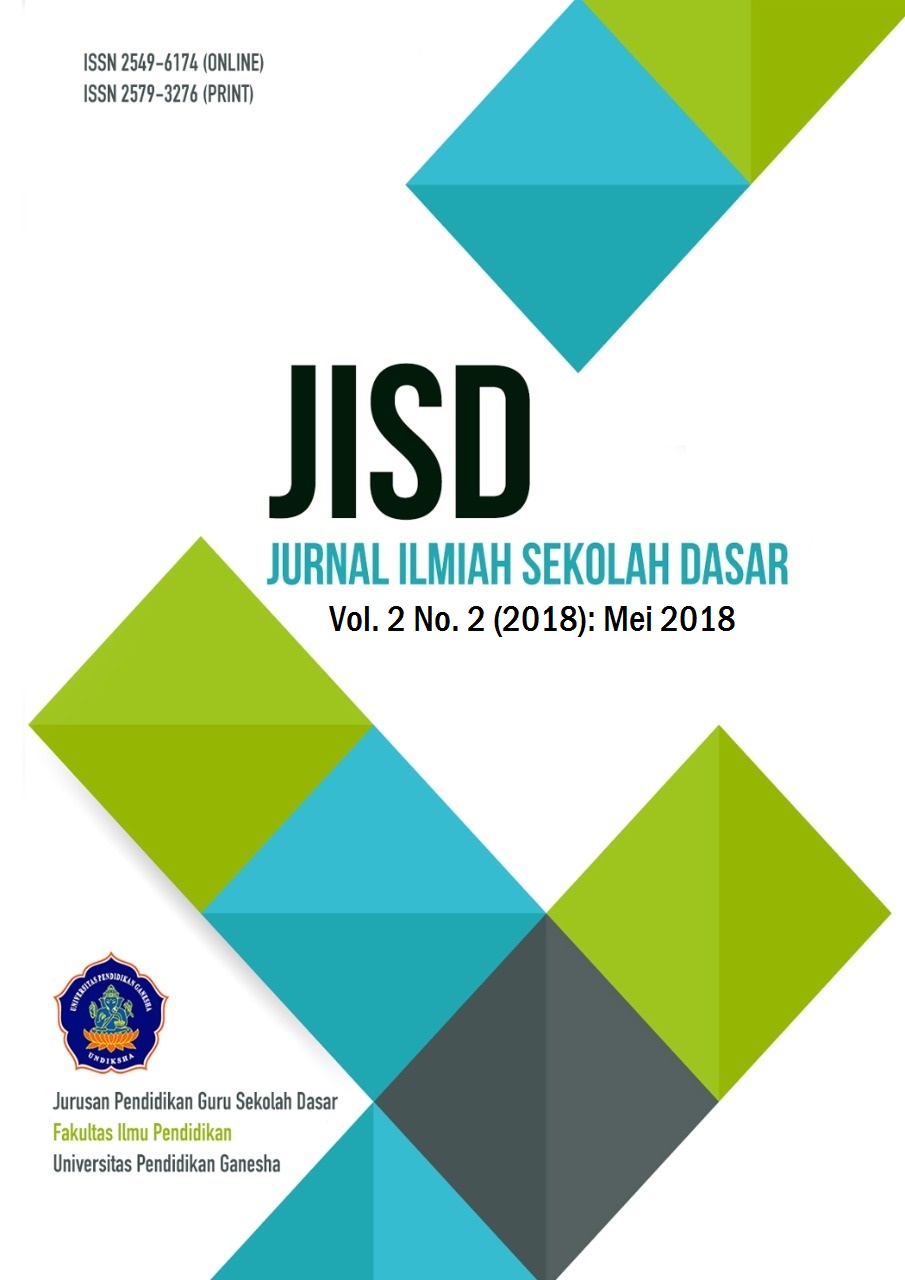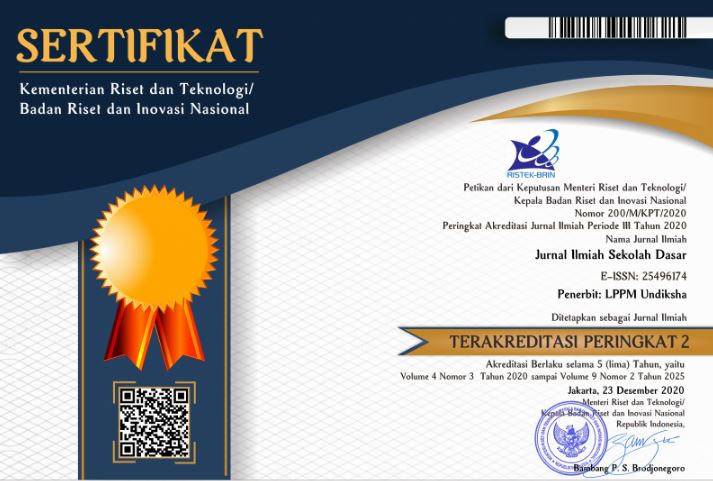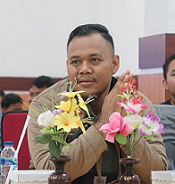PENGEMBANGAN INSTRUMEN SIKAP ILMIAH UNTUK SISWA SEKOLAH DASAR
DOI:
https://doi.org/10.23887/jisd.v2i2.14098Abstract
The purpose of this study was to determine: (1) the stages of development of scientific attitude instruments for elementary school students. (2) the quality of the instruments developed scientific attitude in terms of validity, reliability, and validity konstruknya. Methods of data collection using questionnaires with respondents 200 elementary school students from class IV to class VI. Analysis using the statistical analysis program assisted SPPS 13 for Windows. The steps include instrument development; 1) set of constructs, which set limits on the variables to be measured, 2) determine the factors to find the elements that exist in a construct, 3) prepare a statement grains, 4) implement test instrument was developed. Judging from the quality of the instruments developed realibitas looks pretty good instrument category at 0.881 and after the instrument items were eliminated from about 36 to 15 are also still in the good category is 0.813. Based on the criteria of commonality factor extraction and rotation factors obtained four factors, number of factors extracted by the factor of as much as 4 percent of the cumulative variance is greater than 60% is 65.834%. Judging from the validation performed factor by dividing the number of respondents into two groups of parts, and then performed a factor analysis on each hemisphere of the respondents. The results showed that the factor validation valid results, each still produce a 4 factor with almost equal distribution of items. This further strengthen that 4-dimensional factor in the scientific attitude for elementary school children on an instrument that has developed a strong enough konstruknya validity. The results of the development of scientific instruments already reflect the attitude and decent results are used to measure the scientific attitude of students in elementary schoolReferences
Ardhana, W., Kaluge, L., dan Purwanto. 2003. Pembelajaran inovatif untuk pemahaman
dalam belajar matematika dan sains di SD, SLTP, dan di SMU. Laporan penelitian. Penelitian Hibah Pasca Angkatan I Tahun I. Direktorat Penelitian dan Pengabdian Masyarakat, Dirjen Dikti, Depdiknas.
Ardhana, W., Kaluge, L., dan Purwanto. 2004. Pembelajaran inovatif untuk pemahaman
dalam belajar matematika dan sains di SD, SLTP, dan di SMU. Laporan penelitian. Penelitian Hibah Pasca Angkatan I Tahun II. Direktorat Penelitian dan Pengabdian Masyarakat, Dirjen Dikti, Depdiknas.
Bundu, P. 2006. Penilaian keterampilan proses dan sikap ilmiah dalam pembelajaran
sains sekolah dasar. Jakarta: Departemen Pendidikan Nasional Direktorat Jenderal Pendidikan Tinggi Direktorat Ketenagaan
Edwards, A. L. 1969. Techniques of attitude scale construction. India:Vakils, Feffer and Simons Private Ltd
Elshabrina. 2013. Fakta unik dan menarik Albert Einstein. Cemerlang Publishing
Gega, P.C. 1986. Science in elementary education. New York: Jhon Wiley & Son
Hair, J.F., Black, W.C., Babin, B.J., Anderson, R.E., & Tatham, R.L. 2006. Multivariate Data Analysis (6th Ed.) Upper Saddle River: Pearson education Inc.
Harlen, W. 1992. The teaching of science. London: David Fulton Publisher
Kerlinger, F. N. 1986. Asas-asas penelitian behavioral. Terjemahan oleh Landung R. Simatupang. 1990. Yogyakarta: Gajah Mada University Press.
Martin, D. J. 1997. Elementary scince methods a constructivist approach. Albany: Delmar Publisher
Rapi, N. K. 2005. Pengaruh model pembelajaran terhadap prestasi belajar fisika dan sikap ilmiah siswa (Eksperimen pada SMA Lab IKIP Negeri Singaraja). Tesis tidak diterbitkan. Singaraja: IKIP Singaraja
Salkind, N. J. 2006. Exploring research. Sixth edition. New Jersey: Pearson Education, Inc
Suastra, I W. 2009. Pembelajaran sains terkini: Mendekatkan siswa dengan lingkungan alamiah dan sosial budayanya. Singaraja: UNDIKSHA
Downloads
Published
How to Cite
Issue
Section
License
Authors who publish with the Journal Ilmiah Sekolah Dasar agree to the following terms:
- Authors retain copyright and grant the journal the right of first publication with the work simultaneously licensed under a Creative Commons Attribution License (CC BY-SA 4.0) that allows others to share the work with an acknowledgment of the work's authorship and initial publication in this journal.
- Authors are able to enter into separate, additional contractual arrangements for the non-exclusive distribution of the journal's published version of the work (e.g., post it to an institutional repository or publish it in a book), with an acknowledgment of its initial publication in this journal.
- Authors are permitted and encouraged to post their work online (e.g., in institutional repositories or on their website) prior to and during the submission process, as it can lead to productive exchanges, as well as earlier and greater citation of published work. (See The Effect of Open Access)











